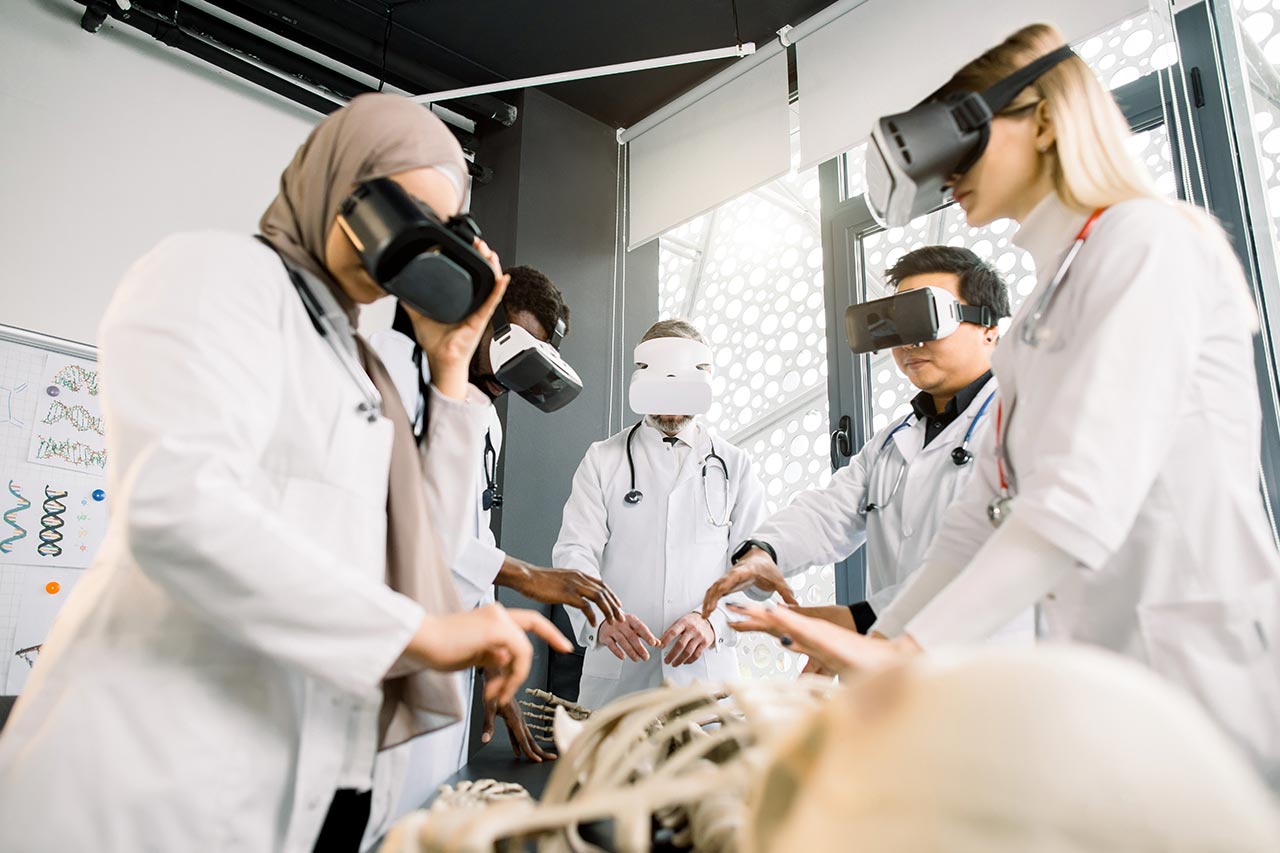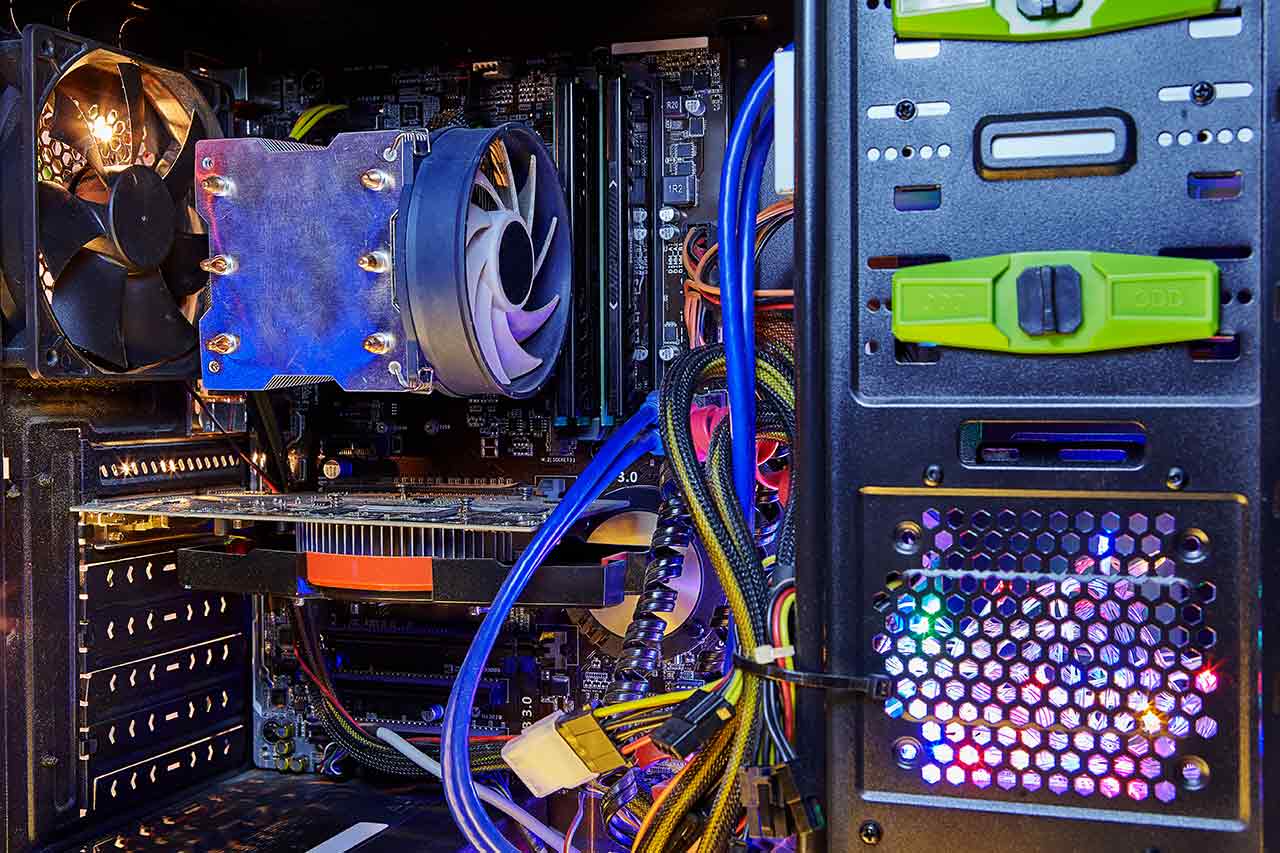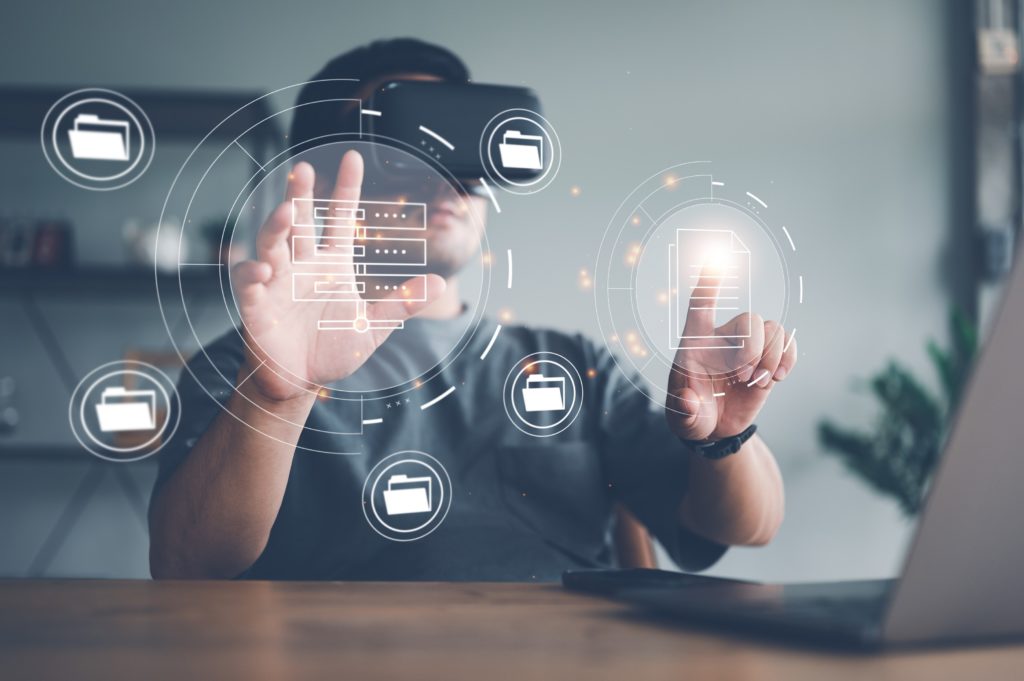Virtual reality (VR) refers to a simulated experience of reality where the user takes part in an artificial or virtual environment, allowing them to act in a setting as if performed live. VR is currently used for entertainment purposes, especially video games, as well as in business settings such as virtual meetings and conferences. However, the applications of virtual reality can also be found in other sectors, including healthcare. In particular, VR has been found to have great potential and benefits in medical education, diagnoses of diseases, and treatment of ailments. Alcimed deciphers for you 3 promising applications of virtual reality in healthcare.
1. Virtual reality for medical education and training of practitioners
First, VR has great potential in medical education and the training of practitioners. In the case of medical students, VR can help expose learners to a variety of medical procedures so that they have sufficient training and practice before encountering real patients, thereby increasing their medical knowledge and skills.
For example, virtual reality can help medical professionals to improve their skills through simulating surgical procedures and other interventions. This can then lead to improvements in their medical skills and patient diagnostics, and reduce errors.
Additionally, VR can simulate doctor-patient encounters, wherein learners may practice how to deliver difficult news to patients. Thus, the use of VR in medical education has potential for both novice and experienced practitioners.
2. Virtual reality in Healthcare to diagnose diseases
Virtual reality can be used in the diagnosis of diseases. For instance, at the University of Basel in Switzerland, researchers created a technology that allows practitioners to interact with a patient’s three-dimensional image using VR. The technology not only allows physicians to see the patient’s anatomical structures but interact the three-dimensional, volume-rendered images in real-time – allowing for the most accurate images possible for the diagnoses of patient diseases and ailments.
Additionally, researchers in Germany have developed a technology that uses VR to allow for improved diagnoses and rehabilitation of neuropsychological patients, such as those with dementia. Traditionally, spatial memory tests for such patients are administered as a paper-and-pencil format, which test skills in an abstract way that is not directly related to practical, everyday life. With the new technology, the test taker can interact intuitively with the natural, real-life simulated VR environment. including the detection of even slight changes in their spatial memory (as well as individualized training and rehabilitation) including accuracy and speed of tasks, movement sequences, line of visions, and behavioural patterns. Such interaction allows for the detection of even slight changes in their spatial memories, leading to a multidimensional evaluation of their performance. Thus, the use of real-life simulation and interaction in a VR environment can allow for greater accuracy and precision of medical diagnoses.
3. Virtual reality for treatments of patients
Finally, VR can be useful in the treatment of patients. For example, in the case of phantom limb pain where a patient continues to experience pain in an area of an amputated arm or leg, VR can help trick the patient’s brain into thinking that he or she is still in control of the phantom limb, thereby allowing them to cope with the pain. VR can also help doctors in the planning of complex operations. For example, in the case of a complex neurosurgery, the medical team can use VR to rehearse and align on the surgical procedure before taking part in the actual operation.
VR also has potential in physical therapy, wherein the technology can be utilized for pain management and physiotherapy, which was found to reduce the patients’ recovery time. Lastly, VR may be applicable in therapeutic areas, allowing patients to feel more relaxed and less stressed through immersion in a peaceful VR environment and scenery. Such can be beneficial in cognitive-behavioral therapies, which can help patients who suffer from mental health issues such as PTSD, anxiety, depression, or phobias. Thus, VR has applicability for both the physical and mental treatments of patients.
4. Limits of virtual reality in healthcare
However, there are also drawbacks to using VR in healthcare. First and foremost is the cost. Hospitals that use VR incur high up-front costs of VR equipment and software. For example, in the comparative case of training hospital workers through live exercises and VR, the total planning, development, and implementation cost using VR was found to be approximately 43% higher than the use of live exercises. However, once the developmental costs in the training were extrapolated over a period of 3 years, the VR costs became lower – costing half of that of live exercises, and down to 35% of the original VR costs incurred during the first year.
Additionally, there is the possibility of having insufficient trials during testing periods, and there may be insufficient training of users before implementing this technology. However, both can be overcome with sufficient time for testing and practice before full implementation.
To conclude, virtual reality is a rising technology in the healthcare sector to improve modern medicine practices, especially in the areas of medical education, disease diagnosis, and treatment. Of course, VR alone may not be able to replace the face-to-face interaction between doctors and patients. It can be seen as a new and rising tool that has already achieved food results, in complement to traditional approaches. Alcimed will continue to follow these developments closely!
About the author,
Lica, Consultant in Alcimed’s Healthcare team in Germany



